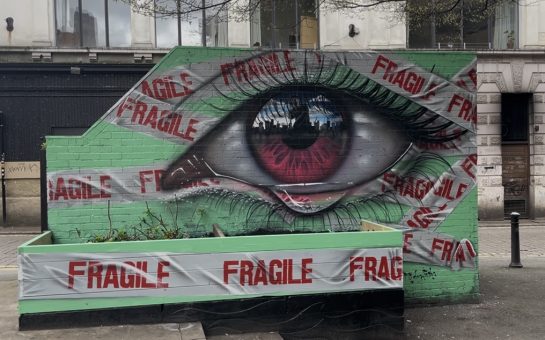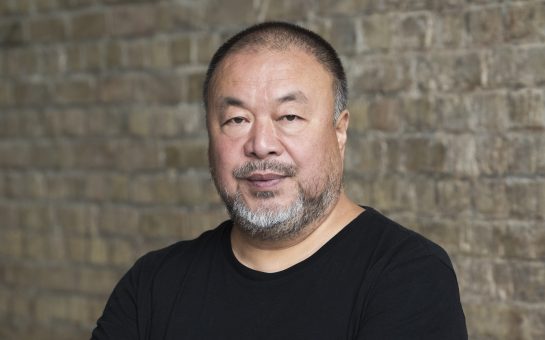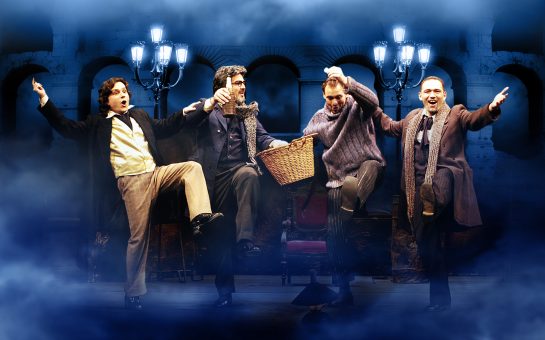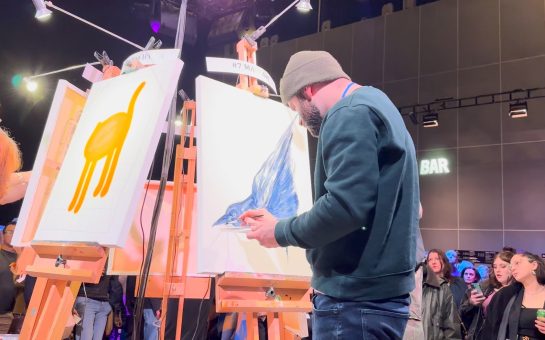Sitting in the historic surroundings of the Old Granada Studios, surrounded by the canvas, collage and creations of the Buy Art Fair exhibition, MM caught up with Director Thom Hetherington.
Last weekend saw the seventh edition of the fair, which is the biggest of its kind outside London and this year incorporated The Manchester Contemporary and the Asia Triennial.
The show, which takes place annually over three days in September, has relocated five times in its seven years.
It has evolved and expanded, been challenged and endured, but we wanted to know if Thom thinks the Buy Art Fair has improved and finally settled now it has found a new home at the studios.
Thom, you are in your seventh year now of running this fair, how does that feel?
“I think we’ve really found our feet. I was pontificating earlier that seven isn’t actually very old.
“So maybe art fair years are like dog years. Maybe we are hitting our thirties.
“It’s a new period, where you cast off youthful things, grow up and find your feet in the world.”
Location appears to be a changeable factor in the life span of the Buy Art Fair. You’ve moved every year, with the exception of two, when you were based at what was formerly Urbis, now the National Football Museum. Has this affected the development?
“Yes, there have in fact been a variety of places. We don’t make life easy for ourselves by moving all the time!
“Certainly we have moved around for the last five years. So, every year, you end up making the first year mistakes in a new venue and then you don’t get to learn from them and you move on again, and you’re back making the same mistakes in a different venue.
“That’s challenging. Fun. Never boring. Even here, in the iconic Old Granada studios, we had the challenge of it being a guinea pig event. We are the first major exhibition fair to be hosted in this venue”.
What was the motivation behind the recent move to Old Granada Studios?
“The minute we knew the space was available we fought tooth and nail to get it. We were lucky that Allied London, the people who own it were willing to work with us.
“It’s an iconic venue, resonant with cultural heritage and history for the north and internationally really. It has that much kudos attached to it.
“It’s not just a beautiful building, it’s also the atmosphere. There’s something almost tangible in the air that makes you want to spend more time here and everyone seems to have picked up on it.
“It’s open plan. It flows. It’s two and a half times bigger! At Spinningfields we were cramped, at capacity and landlocked. It prevented us from doing things.
“Art is all about having room to breathe in a space that you want to stay in. Here we did that and it made a massive difference.”
The 2014 Buy Art Fair and The Manchester Contemporary launched alongside the Asia Triennial. What does the Buy Art Fair bring to Manchester’s arts and cultural scene that makes it unique?
“The Manchester Contemporary is also our art fair, although they have very separate identities. The Manchester Contemporary is its own very self-contained fair for critically engaged art and emerging artists.
“We also hosted an exhibition by the Asia Triennial in this space, featuring new emerging artist, Bashir Makhoul (a contributor to last year’s Venice Biennale) and we had the Noise Festival here this year, curated by musician Brian Eno and Tim Marlow (Royal Academy).
“We are the hub in the art ecology. We generate the footfall and then push people out to all those other fairs and events. We are also here as the name says on the tin: to sell art.
“There are a lot of fantastic events where you can experience art, the Whitworth Art Gallery, Manchester Art Gallery, Harris Museum in Preston, the Tate, but there are very few opportunities where people can come, spend their own money and purchase a piece of art work they love, take it home and enjoy it every day.”
Which pieces were the highlights of this year’s Buy Art Fair?
“The two installations from Asia Triennial and Noise Festival were a must see. The work wasn’t for sale, but the rawness was absolutely brilliant!
“In The Manchester Contemporary, it had to be the legendary Bill Drummond, who famously burnt one million pounds as part of the ‘K Foundation’. He was here for the whole three days, either painting or knitting for virtually all that time.”
And how is the art market at the moment, given that the Buy Art Fair has existed and endured a recession, is it stable, on the rise?
“You wouldn’t have thought there would be a bigger rise in spends on art, but our art fair has grown year upon year through the worst recession in human history.
“I don’t know whether that was the art market itself or because there was untapped demand which we’re still scratching the surface of.”
What do you think are the barriers to cultivating more collectors in the North, is it socio-economic?
“Money? No. I don’t think that’s such an issue. Engagement is the main one. Everyone in the London art world told me no one bought art in Manchester.
“I thought it was the other way around and there were no galleries about six years ago to buy from, well, there were three in the city, but in a city of two and a half million, that’s virtually nothing!
“I felt that if we could provide that and give people the experience, take away the uncertainty and lack of confidence, then they would buy it and they do, but yes, there’s still some way to go.
“It’s a bit like food – everyone has an interest in food now, but twenty-five years ago that wouldn’t have been the case. People would have thought you were mad if you took an interest in the provenance of your olive oil!
“Now though, it’s acceptable. Food broke through the mainstream. It’s on telly, in magazines and people talk about it a lot more. I’m not saying art will be as popular as food, but things are changing.
“There has been a shift… I think this fair proves there is no real North vs. South divide and if anything, if you provide something like this, then people will come.
“Plus, there is a generation now for whom buying art is a normal thing. It’s not snobby or elitist. People are growing up with this and seeing it as something you do.”
What is the appeal of buying art?
“It’s a very visceral and intoxicating thing buying art and people don’t have the opportunity to do it normally.”
What advice would you give to first time buyers looking for the next big thing?
“It’s the simplest thing in the world. If you can afford it and you really like it, then buy it! It really is that simple.
“Art is art. You can’t do a price comparison website. If you have fifty pounds, five hundred or five thousand, it doesn’t really matter. Just buy it – you won’t regret it!”
Image courtesy of Buy Art Fair via YouTube with thanks



